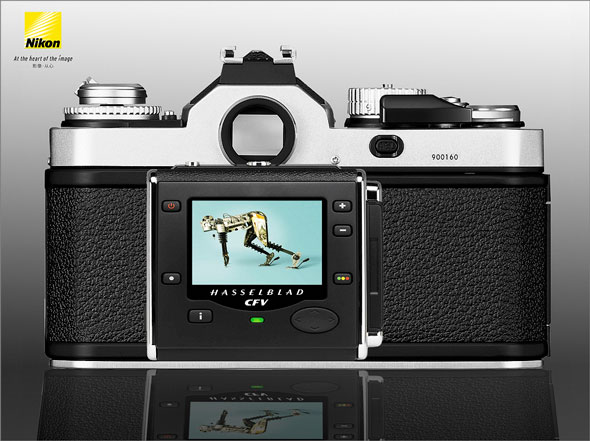Can it get any worse? Another huge loss and forecast drop for Nikon, the camera industry’s number two whose authority no one would have questioned only a few years ago. From the latest financial report for Q1, 2014:
Net sales for the three months ended June 30, 2014, decreased by 61,536 million yen (25.7%) year-on-year to 177,444 million yen, operating income decreased by 2,527 million yen (41.9%) year-on-year to 3,505 million yen, ordinary income was down by 508 million yen (9.9%) year-on-year to 4,642 million yen, resulting in net in come of 3,697 million yen, a decrease of 738 million yen (16.6%) year-on-year.
Further quoting from the report:
In the imaging products business, the market conditions for the digital camera interchangeable lens type were sluggish, and the compact digital camera market shrank as well (…) Sales volume decreased both for digital camera interchangeable lens type which saw worsening conditions mainly in the European market, and for compact digital camera which was affected by the shrinking market (…) The compact digital camera market is expected to continue shrinking (…) Although conditions continue to be severe in the digital camera interchangeable lens type market, a moderate recovery is forecasted
mainly in the U.S.A. and some other areas in the latter half of the fiscal year.
The imaging products business, the sector most of us know Nikon for, is in the doldrums with no end in sight. Precision equipment business on the other hand, capital investment in the semiconductor-related field, is on a recovery track, while the instruments business, the microscope-related market, is expected to remain firm, and the recovery trend in capital investment in the industrial instruments-related market is expected to continue.
Meaning: If I’d be a strategic planner first I’d spin off is the imaging products business. As with Olympus (Sony) and Fujifilm, they find reprieve in the medical instruments respectively beauty/health sector. More and more cameras are built and sold, but there is less and less money in it. Alternative sectors offer the margins camera makers once enjoyed.
Or… or Nikon truly starts reinventing photography, as its president hinted in 2013, saying, “We want to create a product that will change the concept of cameras.”

What should Nikon — and Canon for that — do? We all know it. Just build the cameras people can’t resist. Make the mini Leica many are still waiting for, make a mirrorless digital FM (nah, wouldn’t sell my Df…) and/or build a camera system that’s in-body upgradable, meaning a tough, sturdy body whose sensor, circuits and other key components can be easily replaced by newer, faster, better, smaller and more powerful innards.
Right, everything gets cheaper — the Sony-sensored, full-frame Nikon D610 can be had for less than $1,400 on eBay. Won’t take too long and full-frame cameras break through the $1,000 mark. Everything gets cheaper, but not necessarily better.
If you’d have the choice, would you upgrade the body every two to three years — or would you buy an upgradable camera that itself is upgradable and will attract the attention of all sorts of third party, high-end and premium suppliers? Individuality and personalization are key. Keep photography quality, demanding, affordable and fun.
And don’t handicap cameras to push people to buy technology they could easily have in their present camera in the first place. Camera makers could in fact make more money by selling less cameras, but the right cameras.
Sure there are other and more innovative solutions to kickstart an imaging division again. One thing is certain. Won’t take Sony too long to overtake the competitor it supplies with state-of-the-art sensors…
No, doesn’t look like Nikon has anything reinventional ready for Photokina.


